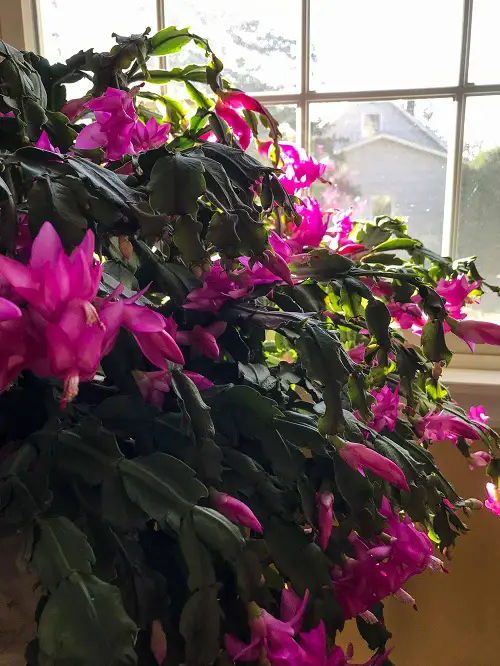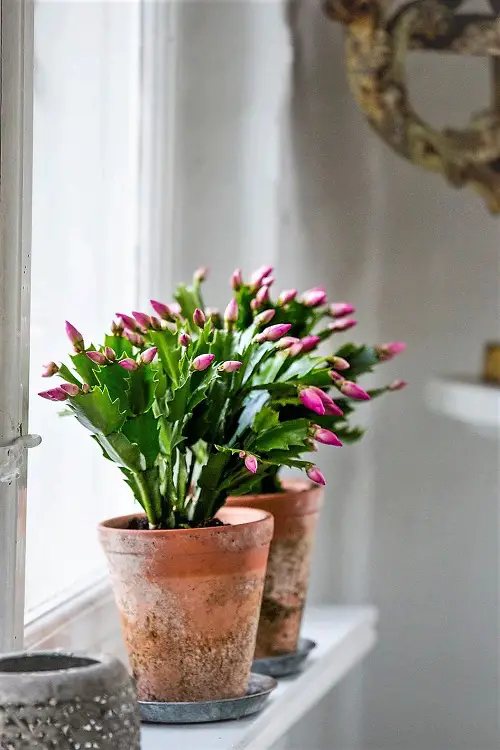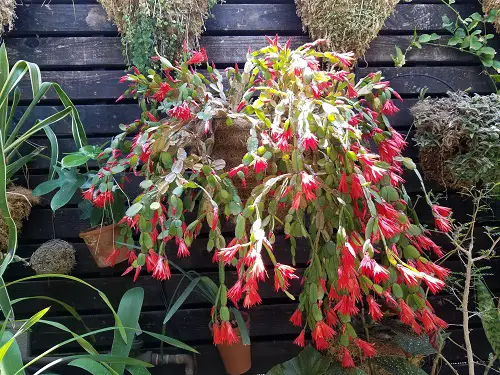Wondering about When Should You Put a Christmas Cactus in the Dark? Find the right time slot in this detailed guide.

If you are looking to make the most out of your Christmas Cactus this holiday season, timing is everything. Controlling the amount of darkness this plant receives could be the secret to more lively flowers at the right time around Christmas! So, When Should You Put a Christmas Cactus in the Dark? Let’s find out!
The Role of Darkness

Light Exposure and Photoperiodism
Like many other plants, Christmas cacti are sensitive to light exposure, a phenomenon known as photoperiodism. Photoperiodism refers to the ability of plants to respond to variations in the length of day and night.
Christmas cacti are classified as “short-day” plants like Poinsettia, which means they require long, uninterrupted periods of darkness to trigger their flowering mechanisms.
Hormonal Changes
During the dark periods, the plant starts producing a hormone called florigen. It acts as the internal signal of the plant to initiate the development of buds and flowers.
Extended darkness increases the concentration of this florigen and encourage the plant to bloom.
Temperature
Temperature also plays a role in the blooming process. Cooler temperatures, when met with extended periods of darkness, can speed up flower bud formation. Therefore, placing your Christmas cactus in a dark, slightly cooler room can be doubly effective.
When Should You Put a Christmas Cactus in the Dark

Time of the Year
The ideal time to start the dark treatment for your Christmas cactus is between mid-September to early October. This timing aligns with the natural blooming cycle of the plant.
Note: You can also do it anywhere from early September to late early November, but this won’t align the blooming time with the festive season, so the best time to do this is above.
Duration: A Six-Week Sabbatical
Your Christmas cactus will need about six weeks of this dark treatment to induce blooming. That equates to 42 days of uninterrupted darkness, a crucial period for the plant to produce the hormones needed for flowering, which causes the plant to produce buds and then bloom.
Daily Timing: Evening to Morning
For each of these days, aim to give the cactus 12-14 hours of total darkness. Begin it at around 6 p.m. or 7 p.m. each evening can be effective. Continue the darkness until about 6 a.m. or 8 a.m. the following morning.
Note: Ensure that the room is completely dark; even a small amount of light can disrupt the process.
Consistency is Key: Stick to the Plan
Once you start this routine, it’s important to be consistent. Any variation, such as skipping a day or reducing the number of dark hours, can throw off the internal clock of the plant and potentially delay blooming.
Do You Repeat the Cycle?
Generally, you don’t need to repeat the cycle within the same blooming season. One six-week period of darkness is usually sufficient to trigger blooming for that year.
However, you can repeat the process each year when fall rolls around to ensure annual blooms.
Post-Darkness Care
1. Reduce Watering
Once the cactus has finished blooming and entering a rest period. This means it needs less water than during its growth and blooming phases. Water it only when the top inch of the soil feels dry to the touch.
2. Fertilizing
After the blooms have dropped off, your cactus doesn’t need immediate feeding. Wait until the growing season arrives, usually around late winter to early spring, to resume fertilization.
Use a diluted (1/2 of its strength), balanced fertilizer once a month at this stage.
3. Light
Your cactus will appreciate being back in a well-lit spot but avoid direct sunlight, which can scorch the leaves. Indirect light is good for your plant post-blooming.
4. Temperature
A range of 60-70°F (15-21°C) is ideal for the post-bloom phase. Avoid extreme temperature changes and keep the room temperature around the ideal range to avoid stressing the plant.
5. Pruning
This is a great time to prune your Christmas cactus to encourage bushier growth. Use clean scissors or pruning shears to remove sections of each stem, cutting at the second or third segment.
Don’t be too aggressive; a bit off the top is usually enough.
6. Monitor for Pests
Check for signs of pests, such as aphids or spider mites. If you see any, treat your plant promptly with insecticidal soap or neem oil.



